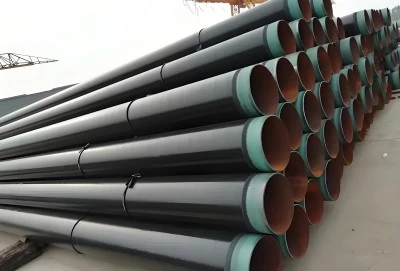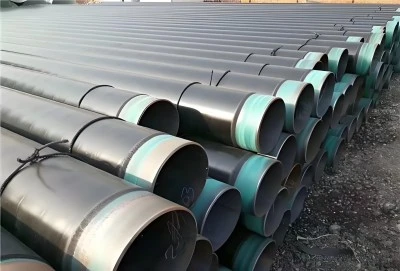Anti-corrosion steel pipes play a crucial role in various industries, from oil and gas to water treatment. The quality of these pipes directly impacts the longevity and safety of the systems they're used in. This comprehensive guide will walk you through the essential steps to detect the quality of anti-corrosion steel pipes, ensuring you make informed decisions for your projects.
|
|
|
Appearance And Size Inspection
The first step in assessing the quality of anti-corrosion steel pipes is a thorough visual inspection. This process involves examining the pipes' surface, checking for any visible defects, and verifying their dimensions.
Surface Examination
When inspecting the surface of anti-corrosion steel pipes, pay close attention to the following:
- Coating uniformity: The anti-corrosion coating should be evenly applied across the entire surface of the pipe.
- Color consistency: Look for any discoloration or variations in the coating's color, which could indicate poor quality or inconsistent application.
- Surface defects: Check for scratches, dents, or other physical damage that could compromise the pipe's integrity.
- Rust or corrosion: Any signs of rust or corrosion, even minor, could indicate subpar quality or improper storage.
Dimensional Verification
Accurate dimensions are crucial for proper installation and performance. Use precision measuring tools to verify:
- Outer diameter: Measure at multiple points along the pipe's length to ensure consistency.
- Wall thickness: Check that the wall thickness meets the specified requirements.
- Length: Confirm that the pipe length matches the order specifications.
- Ovality: Assess the roundness of the pipe, as excessive ovality can lead to installation issues.
Remember, even minor deviations in size can lead to significant problems during installation and operation. Always compare your measurements against the manufacturer's specifications and industry standards.
Mechanical Properties And Chemical Composition Detection
Beyond visual inspection, assessing the mechanical properties and chemical composition of anti-corrosion steel pipes is essential to ensure they meet the required standards for your specific application.
Mechanical Property Testing
Several tests can be conducted to evaluate the mechanical properties of anti-corrosion steel pipes:
- Tensile strength test: This measures the pipe's ability to withstand longitudinal stress without failure.
- Yield strength test: Determines the stress at which the pipe begins to deform plastically.
- Elongation test: Assesses the pipe's ductility and ability to deform without fracturing.
- Hardness test: Measures the pipe's resistance to indentation and wear.
- Impact test: Evaluates the pipe's ability to absorb energy during sudden impacts.
These tests provide valuable insights into the pipe's performance under various conditions and help ensure it meets the required specifications for your project.
Chemical Composition Analysis
The chemical composition of the steel used in anti-corrosion pipes significantly influences their performance and corrosion resistance. Common methods for analyzing chemical composition include:
- Optical emission spectroscopy (OES): This technique provides a rapid and accurate analysis of the steel's elemental composition.
- X-ray fluorescence (XRF): Non-destructive method that can detect and quantify various elements in the steel.
- Carbon and sulfur analysis: Specific tests to determine the precise content of these crucial elements.
Key elements to look for in the chemical composition include:
- Carbon: Affects the steel's strength and hardness
- Chromium: Enhances corrosion resistance
- Nickel: Improves toughness and corrosion resistance
- Molybdenum: Increases strength and resistance to pitting corrosion
- Manganese: Improves hardenability and wear resistance
The ideal chemical composition will depend on the specific grade of steel and the intended application of the pipe. Always compare the results with the relevant standards and specifications for your project.
Corrosion Resistance And Non-Destructive Testing
The final phase in detecting the quality of anti-corrosion steel pipes involves assessing their corrosion resistance and performing non-destructive tests to identify any hidden defects.
Corrosion Resistance Testing
Evaluating the corrosion resistance of anti-corrosion steel pipes is crucial to ensure their longevity in harsh environments. Common corrosion resistance tests include:
- Salt spray test: Simulates a corrosive marine environment to assess the pipe's resistance to saltwater corrosion.
- Electrochemical impedance spectroscopy (EIS): Measures the pipe's resistance to corrosion in various electrolytes.
- Immersion test: Involves submerging pipe samples in corrosive solutions for extended periods to evaluate long-term corrosion resistance.
- Cyclic corrosion test: Combines various environmental factors (humidity, temperature, UV exposure) to simulate real-world conditions.
These tests provide valuable data on how the pipes will perform in different corrosive environments, helping you choose the most suitable option for your specific application.
Non-Destructive Testing (NDT)
Non-destructive testing methods allow for the inspection of anti-corrosion steel pipes without causing damage. These techniques can reveal hidden defects that may not be visible during surface inspections:
- Ultrasonic testing (UT): Uses high-frequency sound waves to detect internal flaws, measure wall thickness, and identify areas of corrosion.
- Radiographic testing (RT): Employs X-rays or gamma rays to create images of the pipe's internal structure, revealing defects such as voids or inclusions.
- Magnetic particle inspection (MPI): Detects surface and near-surface defects in ferromagnetic materials.
- Eddy current testing (ECT): Uses electromagnetic induction to detect surface and near-surface flaws, as well as variations in material properties.
- Acoustic emission testing (AET): Monitors and analyzes sound waves produced by defects under stress, helping to identify active flaws.
Each NDT method has its strengths and limitations, and the choice of technique depends on factors such as the pipe material, size, and specific quality concerns.
Coating Adhesion and Thickness Testing
For anti-corrosion steel pipes, the quality of the protective coating is as important as the pipe itself. Consider these tests to evaluate coating performance:
- Cross-cut adhesion test: Assesses the coating's adhesion to the pipe surface.
- Pull-off adhesion test: Measures the force required to detach the coating from the pipe.
- Holiday detection: Identifies pinholes or other discontinuities in the coating.
- Coating thickness measurement: Ensures the coating meets the specified thickness requirements.
These tests help ensure that the anti-corrosion coating will provide adequate protection throughout the pipe's service life.
Documentation and Certification
While physical tests are crucial, don't overlook the importance of proper documentation:
- Material Test Reports (MTR): Verify that these documents accompany the pipes and contain all relevant test results.
- Quality certifications: Check for ISO 9001 and other relevant industry certifications.
- Traceability: Ensure that each pipe can be traced back to its manufacturing batch and raw materials.
Proper documentation not only confirms the quality of the pipes but also provides a paper trail for future reference and quality assurance.
Contact Information
Detecting the quality of anti-corrosion steel pipes is a multifaceted process that requires a combination of visual inspection, mechanical testing, chemical analysis, and specialized corrosion and non-destructive tests. By following these comprehensive steps, you can ensure that the pipes you select meet the highest standards of quality and performance.
Remember that while these tests provide valuable insights, the specific requirements may vary depending on your application and industry standards. Always consult with experts and refer to relevant standards when making your final assessment.
For high-quality anti-corrosion steel pipes that meet rigorous quality standards, consider LONGMA GROUP. Our pipes undergo stringent quality control processes to ensure superior performance and longevity. For more information or to discuss your specific needs, please contact LONGMA GROUP today at info@longma-group.com.














